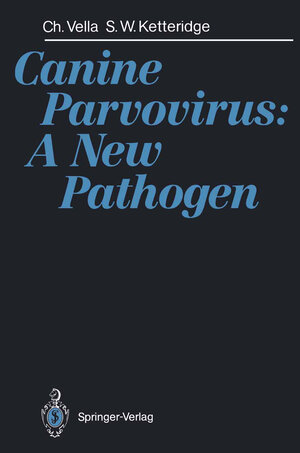
×
![Buchcover ISBN 9783642767975]()
Canine parvovirus (CPV), a new virus of the Canidae first
appeared during the 1970s, but disease caused by this virus
was not reported until 1978. Then within a few months the
virus crossed national and continental boundaries causing
high fatality in domestic dog populations. A similar pattern
of transmission was seen in sylvatic canines but infection
was largely subclinical. Between 1979 and 1981 CPV was
replaced worldwide by an antigenic variant designated
CPV-2a. The epidemiological advantage of this variant over
CPV is not understood.
CPV is a new pathogen of dogs that has attracted an
impressive body of research. However aspects of the biology
of this virus remain unclear, not least of which is the
questionof its possible origin. This book presents an up to
date and comprehensive review of the natural history of CPV
and its control by prophylactic vaccination. Particular
attention is paid to the techniques used to examine the
relationship between CPV and other parvoviruses. CPV is
thought to be a variant of the virulent cat virus FPV
(feline parvovirus) and at least one other variant is known
MEV (mink enteritis virus). Theories on the genesis of CPV
are discussed. An attempt to correlate the evidence and an
hypothetical mechanism by which such a variant could have
been selected is offered. This hypothesis is complemented by
serological evidenceof CPV seroconversion in clinically
normal dogs some years prior to the virulent pandemic.
Many animal parvoviruses are known and in 1989/1990, no less
than 6 new viruses were described. CPV may have arisen from
an FPV vaccine strain. The use of modified live vaccines for
the control of these viruses is questioned and alternative
strategies discussed.
A consise chapter on human parvoviruses describes the ever
increasing role of B19 in human disease, including that of
an opportunistic pathogen in AIDS patients.
appeared during the 1970s, but disease caused by this virus
was not reported until 1978. Then within a few months the
virus crossed national and continental boundaries causing
high fatality in domestic dog populations. A similar pattern
of transmission was seen in sylvatic canines but infection
was largely subclinical. Between 1979 and 1981 CPV was
replaced worldwide by an antigenic variant designated
CPV-2a. The epidemiological advantage of this variant over
CPV is not understood.
CPV is a new pathogen of dogs that has attracted an
impressive body of research. However aspects of the biology
of this virus remain unclear, not least of which is the
questionof its possible origin. This book presents an up to
date and comprehensive review of the natural history of CPV
and its control by prophylactic vaccination. Particular
attention is paid to the techniques used to examine the
relationship between CPV and other parvoviruses. CPV is
thought to be a variant of the virulent cat virus FPV
(feline parvovirus) and at least one other variant is known
MEV (mink enteritis virus). Theories on the genesis of CPV
are discussed. An attempt to correlate the evidence and an
hypothetical mechanism by which such a variant could have
been selected is offered. This hypothesis is complemented by
serological evidenceof CPV seroconversion in clinically
normal dogs some years prior to the virulent pandemic.
Many animal parvoviruses are known and in 1989/1990, no less
than 6 new viruses were described. CPV may have arisen from
an FPV vaccine strain. The use of modified live vaccines for
the control of these viruses is questioned and alternative
strategies discussed.
A consise chapter on human parvoviruses describes the ever
increasing role of B19 in human disease, including that of
an opportunistic pathogen in AIDS patients.



